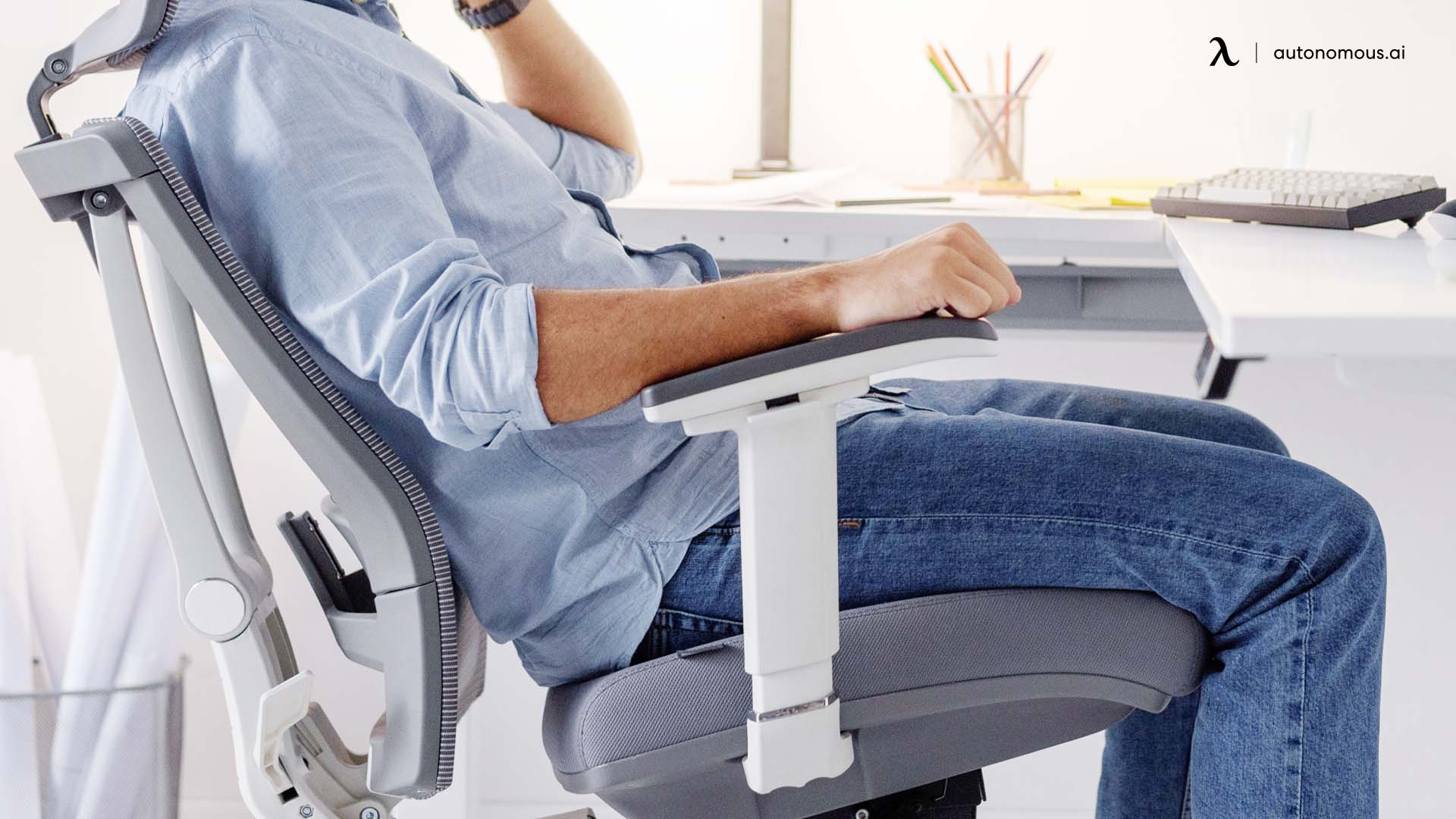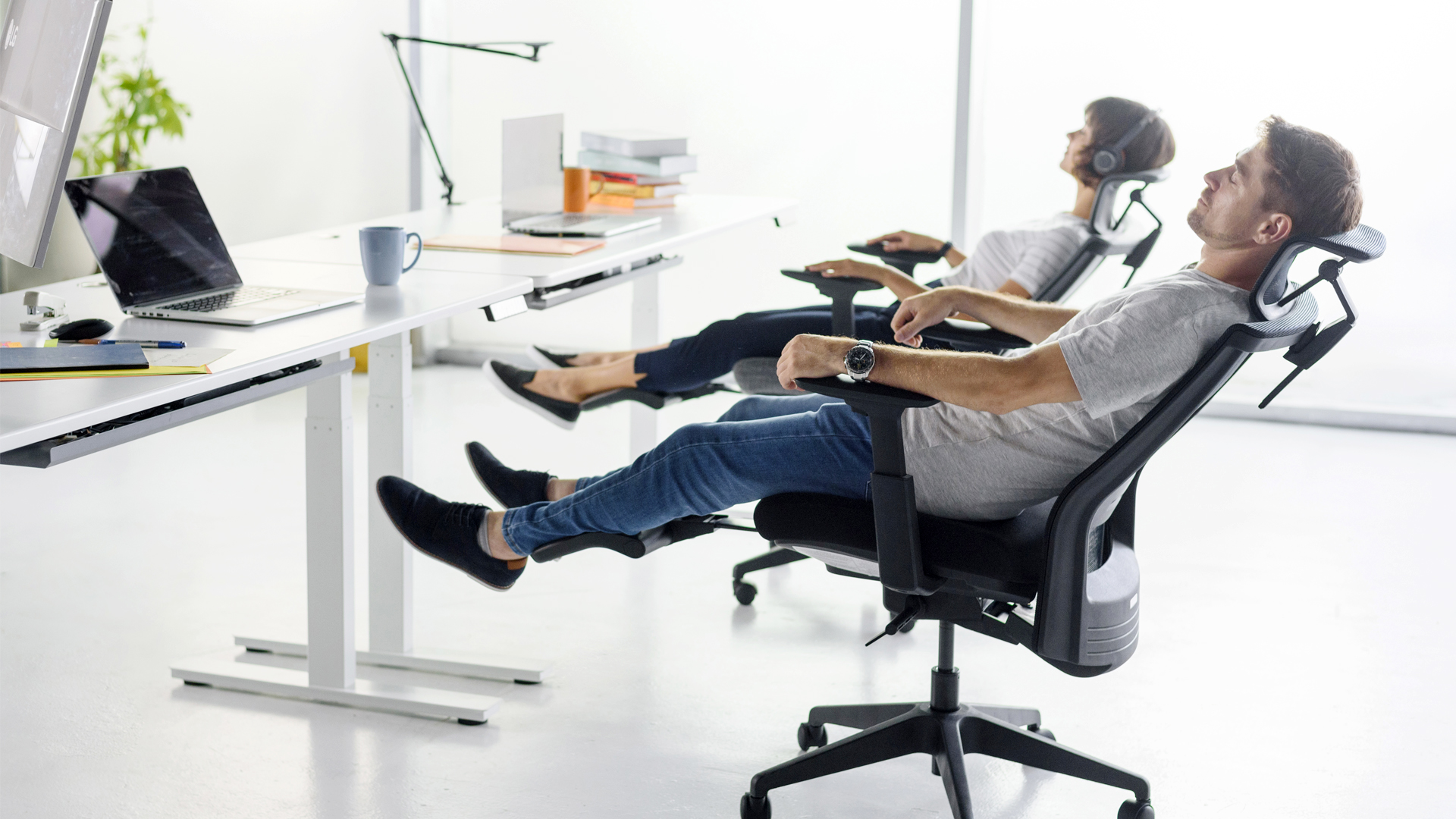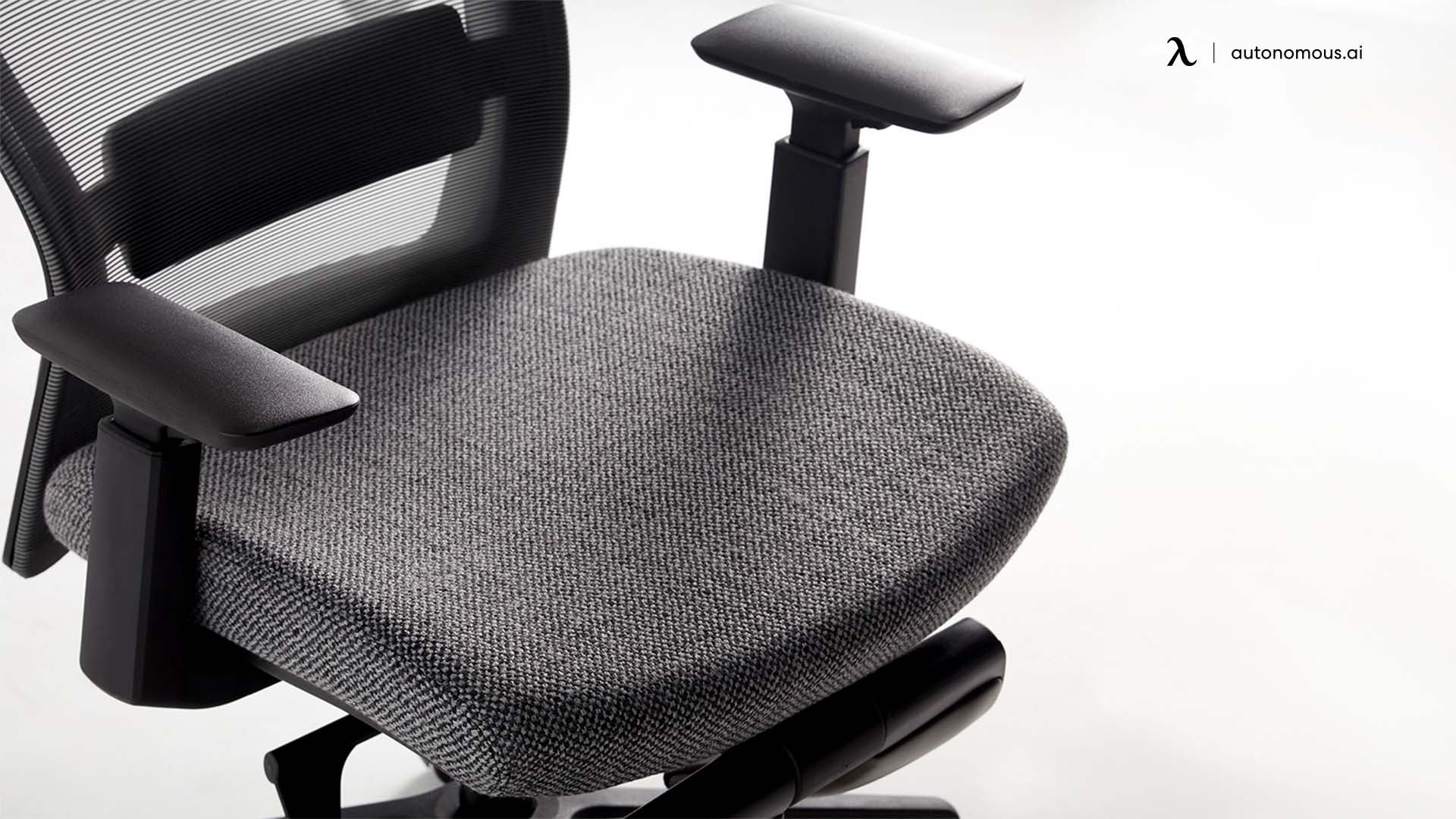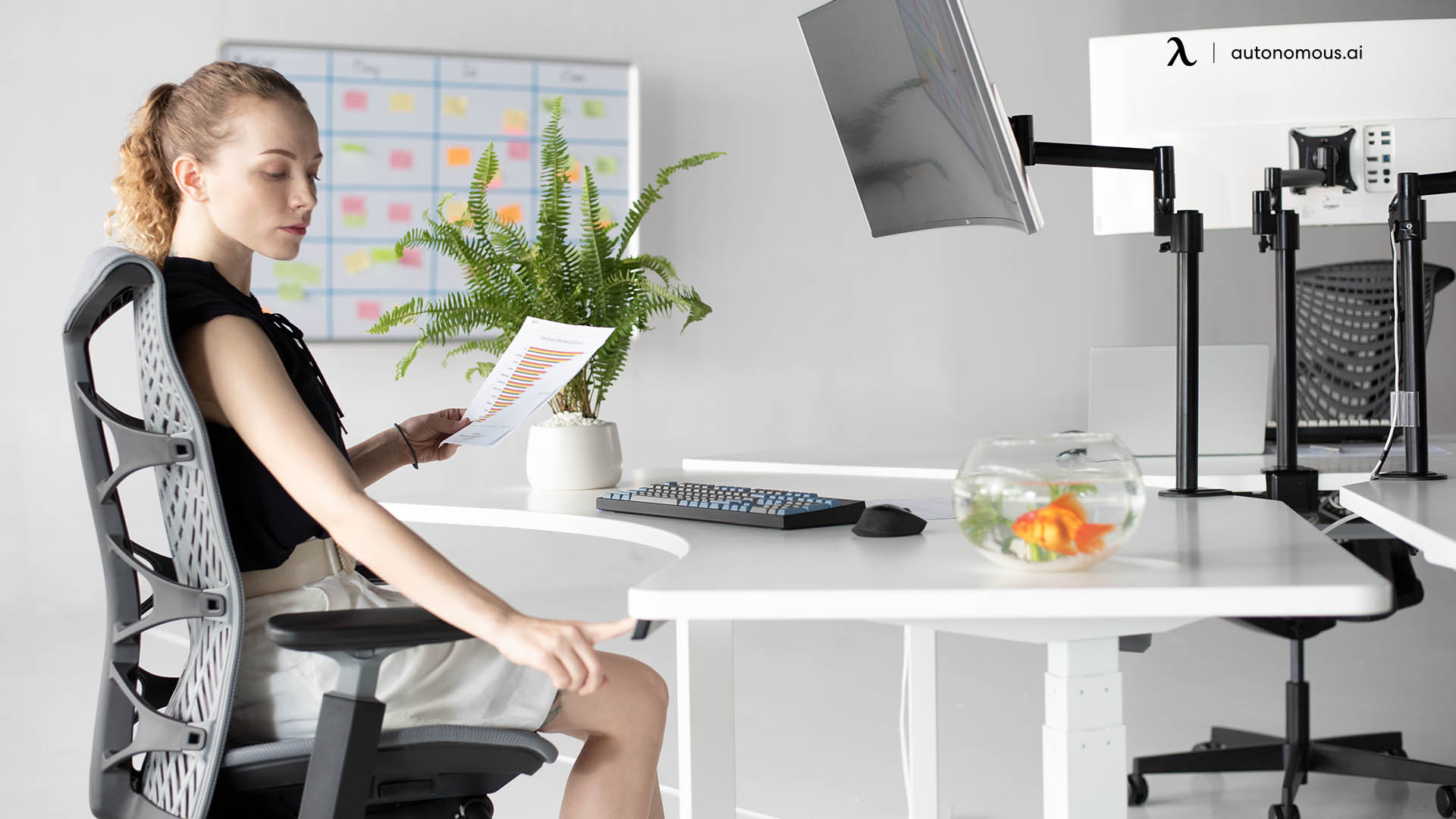
Hard vs Soft Office Chairs for a Desk Job: Which is Better?
Sinking into a rich, plush office chair can feel like sitting on a cloud. The comfort, from the right chair, is incomparable.
Once you’ve spent some time sitting in it, however, you may start to notice a few problems. Maybe your posture slips and your back starts to ache. Maybe it’s a warm day, and the chair has trapped a lot of warmth and made it an unpleasant heat trap. Maybe the bulk of the chair makes it difficult to roll across the low pile carpet, so you have to stretch and reach just to do your job.
On the other hand, a thin, hard office chair doesn’t offer much cushioning. If you’re sitting on it too long, you’ll start to notice pains in your legs and rear, aches in your back as you shift and shuffle to alleviate them, and all the cascading problems that stem from those issues.
You may wonder, then, which is better for office work? Do you want a harder, firmer chair, or a softer, plusher chair? Let’s dig into the considerations you may have.
Overall Comfort
At first glance, this seems easy. A softer chair is more comfortable. Right?
Think about other areas in your life where you may choose between something soft and something hard. Your mattress; do you like a plush pillow top, a firm memory foam, or an even firmer innerspring mattress? Your pillow; do you like something firmer, or something softer?
That’s right; a lot of this comes down to personal preference. Some people like the feeling of plush pillows enveloping them, while others find it exacerbates their pain and they prefer a firmer surface. The same goes for chairs.
With chairs, you have two areas where firmness comes into play. You have the seat pan and the back. A softer back is often associated with back pain; it doesn’t offer the lumbar support you need, so you sink into it, curving your back and putting pressure on your spine. A firmer back may not look as plush or as comfortable, but as it cradles your spine’s natural curve, you’ll experience how the support means comfort.
With the seat pan, a plush, soft pan puts less pressure on your rear, which feels more comfortable. However, if the seat pan is too plush, it can lead to a slouch or improper posture. This will have the opposite effect and will leave you with pain in your back.
In a way, you can compare it to anti-fatigue mats you use with a standing desk. You don’t want to stand on a hard floor, but an anti-fatigue mat is never too soft. Standing on a pillow wouldn’t help you.

Spine Health
One of the core concepts of ergonomics is adjusting the way you sit to conform with the natural curvature of the spine. Unlike some depictions of the human body – and sitting posture – the spine is not naturally straight. Fears of scoliosis and a bent or hunched back make many people fear any curvature, but the reality is that the spine is a gently curved structure naturally.
The S-curve of your spine starts at your tailbone. Above your tailbone is the lumbar spine, and that gently curves inward. This is why lumbar support is important; this part of your lower back naturally wants to rest against something, but if you press it back to a flat-backed chair, it will force your upper body forward into an uncomfortable lean. The natural solution to that is to slouch, which puts an array of pressures on your back and neck.
Above your lumbar spine, the spine curves back outwards around your shoulder blades and upper back. This is why most office chairs retreat around the upper back, to allow you to sit upright rather than slouch forward.
Above that, you have your neck. Neck posture varies but can be nicely supported with a headrest or a neck pillow. An ergonomic office needs to have your work surface (usually your computer screen) sitting around eye level, so you aren’t tempted to look (and lean) downwards.

Time Spent Sitting
Sitting for a prolonged period is one of the most dangerous things we do as a society without ever thinking it’s dangerous. Prolonged sitting leads to spinal compression, muscle imbalance, reduced metabolism, and even other potential medical issues.
One of the best things you can do for an office environment is to minimize the amount of time you spend sitting. Transitioning between sitting and standing throughout the day helps keep you active, prevents a single bad posture from setting in, and works varying muscles to keep from locking them and stressing any given muscle group.
The longer you spend sitting, the more you may be tempted to use a plush, soft chair. It’s more comfortable on your rear, so it feels like you can sit in it longer. The truth is, it’s often the case that a softer chair encourages or exacerbates existing postural issues.
If you’re only spending an hour or so sitting at a time, a plush chair like an executive leather chair can be perfectly acceptable. Executives are often on the move, transitioning between meetings and traveling for business, so the chairs don’t instill a poor posture. If you’re sitting for hours at a time, however, you generally want a chair with better ergonomics. This generally means a harder chair, though there are ergonomic chairs with plenty of padding available as well.

Heat Resistance
One issue we mentioned up above is the issue of heat. While a nice, plush leather chair can feel comfortable when you first sink into it, have you ever tried working a full day in one? Especially if you live in a warmer climate or it’s summertime? Most plush chairs trap a lot of heat with them. This can be appreciated in colder climes, but in warmer areas and warmer times, it’s extremely uncomfortable.
Sitting in an overly-plush chair for hours at a time when it’s too warm means you’ll end up swimming in sweat and heat. If you wear shorts, leather can stick to your legs. It’s not breathable and can even cause some skin conditions if you have sensitive skin.
Mesh chairs are the usual alternative. A relatively thin foam seat pan and a mesh back make for a lightweight chair that sheds heat easily and helps keep you cool during warmer times. It doesn’t trap heat for colder times, but that’s not necessarily a problem as long as your office climate control is set properly.
To a certain extent, this can be alleviated with periodic transitions between sitting and standing. If you aren’t sitting for hours at a time, you don’t have to worry as much about heat accumulation. If you aren’t given this option, choosing a firmer chair with a mesh back is the better option.
Materials and Care
The material a chair is made of can vary a lot depending on the brand and the construction, not just the style. A softer chair can be made out of high-quality memory foam, tension-tuned mesh with dynamic pressure points, high-quality plastic or aluminum construction, and a wide range of high-quality materials. On the other hand, the foam might be a simple cushion of recycled materials that compress easily in under a year, covered in a fabric that tears and runs, with a back that offers no tangible support.
Conversely, a plush chair can be high-quality leather that, when cared for, can last for decades. On the other hand, it can be made of basic upholstery that tears, creases, stains, and runs extremely easily. Mesh has many of these comfort benefits without getting too hot or leaving creases and cracks.
Whether or not a chair is soft or firm doesn’t always have to do much with the quality of the materials or construction. What matters here is getting your chair from a reputable seller rather than from a low-quality provider, like the lowest bidder office supply company.
One area where it might matter is the compression of the seat pan. Even the highest quality memory foam will compress after long years of use. A plush chair can stay softer for longer because there is more material to eventually compress.

The Pros and Cons of Firm Chairs
Pros of Firm Chairs
- Generally more ergonomic designs available.
- More breathable materials.
- Easier to encourage standing.
- More mobile.
Cons of Firm Chairs
- Tend to wear out faster.
- Can be uncomfortable for long periods.
- Requires getting used to.
- Potentially not designed for ergonomics.
Firm chairs are the most common kind of chair you see in a modern office environment. They tend to have the most affordable range of prices, though firm chairs can range from cheap task chairs to expensive high-end office chairs. It’s not uncommon to see a firm chair design at $100 and another for $2,000.
Firm chairs have the benefit of ergonomic enhancements - if they’re properly designed with comfort and ergonomics in mind. It’s a lot harder to work ergonomics into a soft chair than it is a harder chair, though a completely cushion-less chair is unlikely to have ergonomics worked into its design.
Firm chairs tend to have less bulk to them, making them easier to move if your job requires a lot of moving. They also may be slightly on the edge of uncomfortable, which can be a benefit when it comes to transitioning between sitting and standing throughout the day. If you’re too comfortable where you sit, even if you’re doing long-term damage to your posture, you may be tempted to not stand up when you should.
The primary downside of a firm chair, other than the initial discomfort as you get used to it, is that they often wear out more quickly than larger, softer chairs. That’s not always a guarantee, but it’s true in broad strokes.

The Pros and Cons of Soft Chairs
Pros of Soft Chairs
- Much more comfortable initially.
- Often quite durable.
- Easier on the rear.
Cons of Soft Chairs
- Can lead to slouching and poor posture.
- Traps heat and doesn’t breathe well.
- Generally not ergonomic.
It’s important to recognize that there’s a difference between a soft office chair and a plush executive chair. A chair can be soft without being overly plush. There are “firm” office chairs that, nevertheless, have a six-inch pad for the seat pan and are extremely comfortable to sink into. On the other hand, an executive chair is going to have a ton of padding all around, even in places it doesn’t belong or serve a purpose, like the middle of your back.
A soft chair may be comfortable initially, but over time, it can lead to bad habits and poor posture. This can lead to all of the same back pain and neck pain issues you experience with a poorly designed chair. Additionally, if heat is an issue, a plush chair is going to be a menace if it's trapping more heat. This can be especially problematic in the summertime when you're already trying to fight the heat.
Ergonomic design is a big issue with softer chairs as well. While some of them do offer some level of lumbar support, it’s difficult for softer materials to offer the support you need to maintain proper posture. As such, it can be difficult to find a chair that is both ergonomically designed and offers a plush and soft seat surface.
A Final Determination
At the end of the day, what really matters is what works for you. Different people have different tolerances for certain ergonomic issues and other considerations, such as heat.
Usually, as you might expect, the best option is one that is somewhere in the middle. A chair that is too firm can lead to pressure problems, cut off circulation, and lead to pain in the rear and pelvis. A chair that is too soft can lead to slouching and poor posture, locked and tense muscles, and issues standing. Like goldilocks, the solution is a chair that is neither too firm nor too soft; it’s somewhere just right.
Spread the word
.svg)







